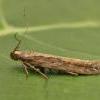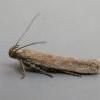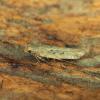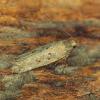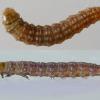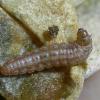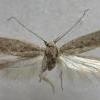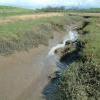35.114 Scrobipalpa instabilella (Douglas, 1846)
Status and Distribution
Local to locally common, occasionally abundant, on saltmarshes in England, Wales and eastern Ireland; very local in the Channel Islands; rare in Scotland with single records from Dumfriesshire, East Lothian and, probably as a vagrant, on Fair Isle.
There are unconfirmed records (mainly historical) from further regions across the British Isles where breeding or microscopic examination of specimens has not taken place.
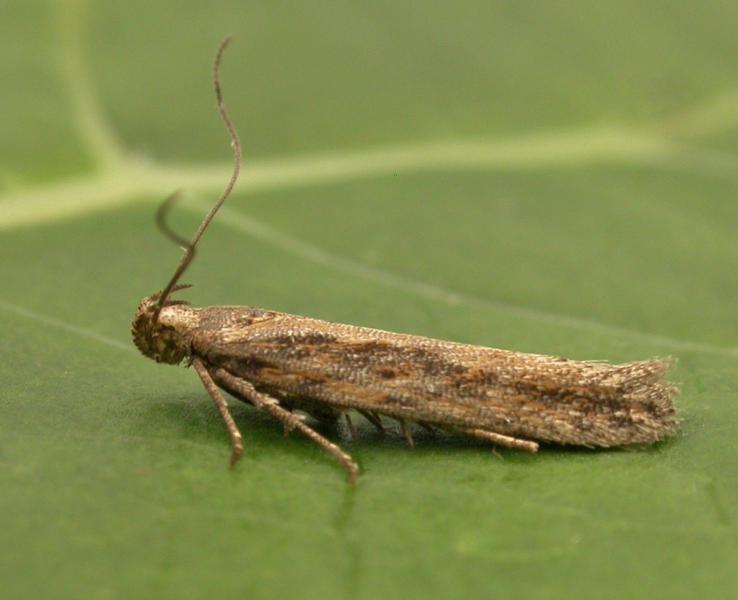
Provisional map
Foodplant and Larval Feeding Signs
Atriplex portulacoides (sea-purslane), see plant distribution map, and, on one occasion, bred from the non-native but widely distributed Lycium barbarum (duke of argyll's tea-plant). A few other foodplants have been listed as of accidental or unconfirmed use in the British Isles and these have been ommitted until confirmed breeding in the wild is documented.
Mines and spins leaves together.
Finding the Moth
Larva: believed to over-winter in the stem as a young larva, then mines the leaves extensively ejecting the frass and pulls leaves together to form an untidy spinning.
Adult: readily disturbed during sunny conditions in the daytime and later comes to light.
Similar Species
One of the more variable species with external features which can be very similar to S. salinella, occasionally S. nitentella and some forms of S. samadensis. There are a few similar additional species found just across the channel in France which would be well worth looking out for - for further information see under S. salicorniae.
Because of the sometimes considerable variation within most saltmarsh inhabiting Scrobipalpa species, identification by wing markings alone will often not be possible. Caution and care are the watchwords for this group.
If a moth has been bred from a known foodplant, and therefore also time of year when the larva feeds and the nature of its feeding methods have been observed, this information, plus a freshly emerged moth, will allow the number of possibilites to be reduced considerably. If the bred or caught moth is a fresh specimen AND displays the distinctive markings of some species (see below) then an identification without more detailed examination should be possible in many cases.
Those more readily identifiable when freshly emerged by the forewing markings are listed below. However all of these also have variation in their wing markings which, when the obvious features are obscured or worn, will then resemble some other Scrobipalpa species.
Scrobipalpa suaedella - those with an obvious clear pale ochreous dorsal quarter to the forewing.
Scrobipalpa obsoletella - those with the forewing a pale greyish colour lacking any red-brown colouration and appearing paler in the final one-third due to a pale postmedial fascia.
Scrobipalpa ocellatella - those with the prominent angled fascia at three quarters on the forewing and dark markings contrasting with the surrounding paler ground colour.
In cases where there is any doubt, particularly where worn light-trapped specimens are concerned, dissection will be essential to obtain an accurate identification until a good familiarity is built up with the range of species and their markings at a particular site.
Genitalia differences are often small but reasonably constant between the various species. It has been noted that the apical arm on the tip of the aedeagus of S. instabilella can vary slightly in width and the angle made at the end sometimes only reaches c.75 degrees rather than the full 90 degrees of most specimens.
Single brooded from mid-June to late August.
May to July is given in Emmet and Langmaid (2002), but only two records on the scheme database relate to adults in May (see below) and about a quarter of the total records (270 plus) are during August.
Earliest: 2nd May 2010 (VC18) and 20th May 2010 (VC66) - the first an exceptionally early date.
Latest: 8th September 1985 (VC66)

